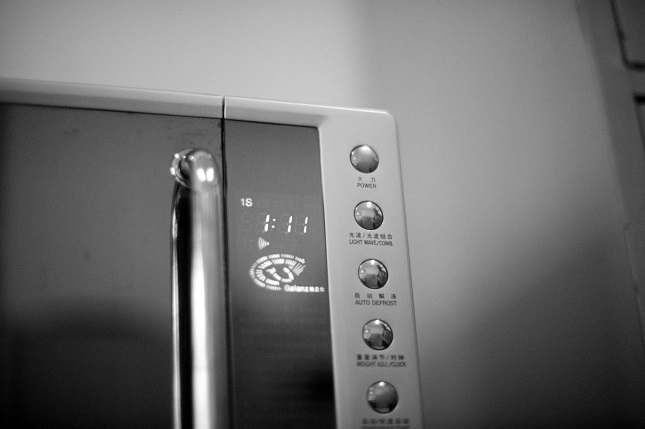Key Takeaways:
- Uneven heating, loud noises, and unresponsive controls can signal problems worth investigating
- Repairs are often worth it for newer models with isolated faults
- Older units with multiple issues or hard-to-find parts are usually better off replaced
- Safety and efficiency are just as important as performance when making the final decision
You probably don’t think twice about using your microwave until something goes wrong. Suddenly, it’s not heating evenly, making odd noises, or the door doesn’t close like it used to. At first, it’s just annoying. But then you wonder: is this fixable, or should you start looking for a new one? Not every microwave issue means it’s done for. Some problems are quick fixes. Others are signs it’s on its way out. Knowing the difference can save you both time and money — and help you avoid tossing a perfectly usable appliance too soon.
Common Signs Something’s Wrong
Microwaves don’t usually quit without a warning. Instead, you’ll start noticing minor signs: maybe your leftovers aren’t as hot in the middle, or the light flickers when you open the door. A persistent humming or rattling sound could point to a loose turntable motor or a worn fan. Buttons that stick or stop responding entirely are another red flag. One of the most common signs something’s not right is when the microwave runs but doesn’t heat — that often means the magnetron, a key internal component, has failed.
You might also notice your microwave takes longer than it used to, even when cooking the same foods. That slowdown in performance could mean power output has dropped. Over time, internal parts wear out, and while some can be replaced easily, others signal that the unit’s nearing the end of its life. If you’re dealing with more than one of these symptoms, it’s worth taking a closer look before you decide what to do next.
When It’s Still Worth Repairing
Not every issue means it’s time to toss your microwave. If your appliance is only a few years old and hasn’t had many problems before, chances are a repair could be all it needs. Issues like a faulty door switch, blown fuse, or unresponsive control pad are relatively minor and often inexpensive to fix. These types of problems don’t usually require major parts, and a qualified technician can sort them out without much hassle.
It’s when the problems get deeper — like replacing a magnetron or fixing a power supply board — that the repair costs start creeping up. But if your microwave was a higher-end model to begin with, it might still be worth fixing, especially if the rest of it is in good shape. People often start looking for microwave repair near me when they’re not ready to give up on a unit that’s otherwise been reliable. If a technician says the fix is straightforward and affordable, it makes sense to keep it running a bit longer.
Repairs That May Not Be Worth It
There’s a point where holding onto your microwave starts costing more than it’s worth. If your unit is over seven years old, even simple repairs can become questionable. Parts wear down over time, especially in households where the microwave is used daily for reheating, defrosting, or complete meal prep. Once core components like the magnetron, transformer, or control board begin to fail, repair bills start to stack up quickly.
Sometimes it’s not just about the price of one part — it’s the labour, the time without a working unit, and the risk that something else will fail not long after. Multiple issues cropping up at once often signal the appliance is reaching the end of its practical life. Even if you do get it working again, there’s no guarantee it will last much longer. At that stage, investing in repairs can feel like prolonging the inevitable.
Another factor is parts availability. For older or discontinued models, certain components can be difficult or even impossible to find. When replacement parts are rare, costs rise and wait times lengthen. If a technician tells you they can’t source what’s needed without ordering internationally or cannibalising old units, that’s usually a sign that replacing the microwave will be simpler, faster, and potentially cheaper in the long run.
Safety and Energy Efficiency Considerations
Safety is another reason to rethink ongoing repairs, especially with older microwaves. Door seals wear out, hinges loosen, and internal shielding may become less reliable after years of heat and vibration. If you’ve ever noticed the door not closing tightly or needing an extra push, it’s worth paying attention. That could mean there’s a risk of microwave leakage, which isn’t something to take lightly — especially if the appliance is used in a busy family kitchen.
Even if everything still works, older microwaves tend to use more electricity. Power output may drop over time, causing longer cooking times and wasted energy. Newer models are designed to be far more efficient, both in energy use and in heat distribution. If your current microwave feels slow, runs hotter than it used to, or causes your electricity bill to spike, there might be hidden inefficiencies eating away at your monthly costs.
Besides power use, newer models often have built-in safety features that older models lack, such as improved child locks, quieter operation, and auto-shutoff sensors. If your current unit doesn’t have those, or if it’s becoming a bit unpredictable, safety alone might be enough reason to consider letting it go.
What to Think About Before Replacing
Before you make the call to replace your microwave, take a moment to consider how much you actually use it and what you rely on it for. If it’s just the occasional cup of tea or reheating leftovers, a basic replacement might be all you need. But if your microwave plays a daily role in cooking full meals, you might want to consider newer models with advanced features like inverter technology, sensor cooking, or quieter operation.
Cost is important, but it’s not the only factor. Replacement often comes with extra expenses — disposal of the old unit, delivery fees, or installation if you’re using a built-in model. Weigh those costs against the quoted repair price. Sometimes, spending a bit more upfront on a newer, more efficient unit makes sense in the long term.
Also, think about space and design. Older models may no longer fit well in your kitchen setup if you’re renovating or upgrading other appliances. If your current microwave feels bulky, outdated, or just doesn’t suit your space anymore, replacement can solve more than just performance issues. It can also make your kitchen easier to use day to day.
Conclusion
Deciding whether to repair or replace your microwave goes beyond what’s broken. Consider the appliance’s age, how often you use it, and whether it’s still safe and efficient. While some issues can be fixed quickly and affordably, others point to deeper wear that may not be worth addressing. It’s not always a clear-cut decision, but taking the time to evaluate the full picture will help you choose the option that best suits your needs, budget, and household.










































